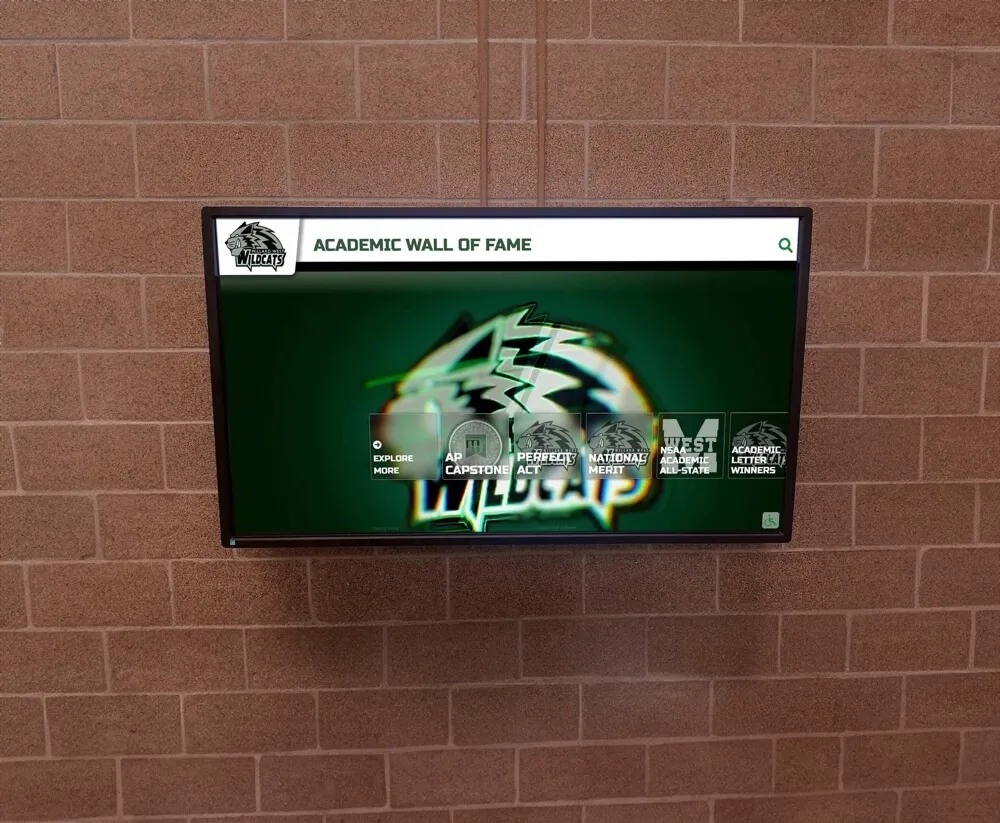Key Takeaways
Comprehensive guide to renovating academic walls of excellence. Learn modernization strategies, digital display options, renovation costs, and best practices for updating recognition displays in schools and universities in 2025.
Schools and universities across the nation face a common challenge: aging academic walls of excellence that once celebrated student achievement with pride have become outdated, overcrowded, and often ineffective at inspiring current students. These recognition displays—featuring faded plaques, cramped layouts, and limited space for new honorees—no longer serve their intended purpose of motivating scholarly excellence and preserving institutional legacy.
As of October 2025, educational institutions invest heavily in facility renovations, with investment in existing campus buildings growing by 33% from 2021 through 2023. This trend reflects a growing recognition that modernizing current assets often provides better value than new construction. Academic walls of excellence represent prime candidates for renovation, combining symbolic importance with practical opportunities to leverage modern technology that transforms static displays into engaging, interactive recognition experiences.
This comprehensive guide examines everything schools need to know about renovating academic walls of excellence in 2025—from assessing current display limitations and evaluating modernization options to implementing digital recognition solutions and managing renovation projects effectively. Whether you’re an academic dean managing honor roll programs, a facilities director planning campus improvements, or an advancement professional seeking better donor recognition, this resource provides the frameworks and strategies necessary for successful renovation projects.
Understanding the Academic Wall of Excellence Renovation Opportunity
Before diving into renovation strategies, understanding why academic walls of excellence matter and what drives the need for modernization helps frame effective renovation approaches.
The Purpose of Academic Recognition Displays
Academic walls of excellence serve multiple critical functions within educational institutions. They validate scholarly achievement by providing visible acknowledgment that academic excellence matters to the institution. They inspire current students by showcasing role models who demonstrate that high achievement is possible and celebrated. They preserve institutional memory by documenting achievement patterns and excellence traditions across decades. They communicate institutional values by demonstrating through visible recognition what the school community celebrates and prioritizes.
When these displays function effectively, they contribute materially to school culture, student motivation, alumni engagement, and community pride. However, when displays become outdated, overcrowded, or ineffective, they fail to deliver these benefits while sending unintended messages about institutional priorities and commitment to recognizing achievement.

Common Problems with Existing Recognition Walls
Traditional academic walls of excellence face predictable challenges that accumulate over time:
Space Limitations: Physical recognition walls have finite capacity. As years pass and honor rolls grow, space constraints force difficult decisions about which achievements deserve continued display and which get removed to accommodate new recognition. Many institutions find themselves rotating older plaques into storage, effectively eliminating recognition for past achievement.
Maintenance Challenges: Physical plaques fade, crack, and deteriorate over time. Adhesives fail, causing plaques to fall. Engraving becomes illegible as finishes wear. Updating displays requires physical labor coordinating with contractors for new plaque installation, creating delays between achievement and recognition that undermine motivational impact.
Aesthetic Outdating: Recognition displays installed decades ago often reflect design aesthetics that now appear dated. Dark wood backgrounds, brass plaques with formal typography, and institutional color schemes that seemed appropriate at installation now communicate “old-fashioned” rather than “excellent.” This visual aging can undermine the prestige these displays intend to convey.
Accessibility Concerns: Many older recognition displays mount high on walls or in locations creating accessibility challenges for visitors with disabilities. Small engraving fonts prove difficult for visitors with visual impairments to read. Lack of alternative formats prevents some community members from engaging with recognition content.
Limited Information Capacity: Physical plaques typically display minimal information—names, achievement types, and years. They cannot tell fuller stories about achievements, provide context about difficulty or significance, or connect individual accomplishments to broader institutional patterns. This information limitation reduces the inspirational and educational value recognition could provide.
The Case for Renovation vs. Continuation
Institutions considering academic wall of excellence renovation often debate whether renovation represents necessary investment or whether existing displays remain adequate despite limitations. Several factors argue strongly for renovation as strategic priority.
Research consistently demonstrates that investment in existing campus buildings typically proves less expensive than new construction, leveraging existing infrastructure while creatively modernizing envelope and systems. This principle applies equally to recognition displays, where renovation investment updates high-visibility spaces that contribute materially to institutional culture and community engagement.
Modern renovation approaches also provide opportunities to dramatically enhance functionality beyond simple aesthetic updates. Solutions like digital recognition displays transform static walls into interactive experiences that increase engagement, provide unlimited recognition capacity, enable instant updates, and create accessibility features that traditional displays cannot match.
Assessing Your Current Academic Wall of Excellence
Effective renovation projects begin with systematic assessment of existing conditions, limitations, and opportunities. This evaluation provides the foundation for informed decision-making about renovation scope, approach, and investment.
Physical Condition Evaluation
Begin by documenting the current physical state of existing recognition displays:
Structural Integrity: Examine wall mounting systems, backing materials, and support structures for signs of deterioration, damage, or inadequacy. Check whether existing infrastructure can support renovation plans or requires replacement before modernization.
Material Condition: Assess the condition of plaques, engraving, protective coatings, and display backgrounds. Document fading, cracking, corrosion, or other deterioration that impacts appearance and legibility. Photograph current conditions establishing baseline for renovation planning.
Space Utilization: Measure actual display space and inventory all plaques and recognition elements. Calculate what percentage of existing space remains available for future additions. Determine how many years of continued recognition current capacity can accommodate before requiring expansion.
Location Assessment: Evaluate whether current display locations remain optimal. Consider foot traffic patterns, visibility from key areas, accessibility for all visitors, lighting conditions, and adjacency to related spaces. Poor location choices may warrant relocation as part of renovation projects.
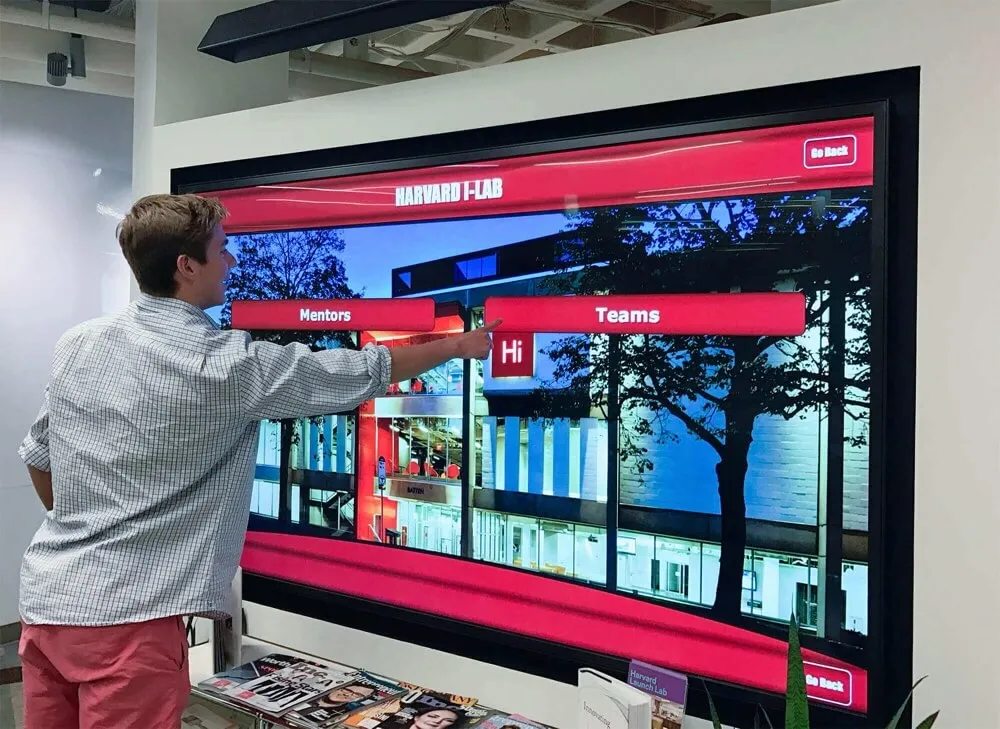
Functional Effectiveness Analysis
Beyond physical condition, evaluate how effectively current displays serve their intended purposes:
Recognition Comprehensiveness: Document what percentage of eligible achievers receive recognition and how recent recognition remains. Identify achievement categories or time periods underrepresented in current displays. Determine whether space limitations force exclusion of deserving achievements.
Engagement Patterns: Observe how students, visitors, and families interact with existing displays. Note whether people actively examine recognition or simply walk past displays without engagement. Low engagement signals that displays fail to inspire or interest audiences.
Update Frequency: Review how often displays receive updates with new achievement information. Determine typical lag time between achievement and recognition display. Extended delays or infrequent updates reduce the motivational value recognition provides.
Information Quality: Assess whether current displays provide sufficient context and detail about achievements. Determine whether viewers can understand what accomplishments represent, why they matter, and how they connect to institutional values. Limited information reduces educational and inspirational value.
Stakeholder Input Gathering
Effective renovation projects incorporate perspectives from diverse stakeholders who interact with recognition displays:
Student Feedback: Survey or interview students about whether they notice and engage with recognition displays, what makes recognition meaningful versus perfunctory, whether they understand pathways to earning recognition, and what improvements would make displays more inspiring and relevant.
Faculty and Staff Perspectives: Gather input from teachers, counselors, and administrators about whether displays effectively motivate students, how selection and recognition processes work, what challenges exist with current systems, and what improvements would enhance recognition effectiveness.
Alumni Input: Consult graduates about their memories of recognition displays, whether they can find their own achievements when visiting, what connection they feel to current recognition, and how displays might strengthen alumni engagement with institutions.
Family and Visitor Reactions: Seek feedback from parents and community members about first impressions from recognition displays, what displays communicate about institutional priorities, ease of finding specific students or information, and perceived prestige and professionalism of current recognition.
Modern Renovation Approaches: Traditional vs. Digital Solutions
Academic wall of excellence renovation projects typically choose between traditional renovation approaches that maintain physical plaque formats versus modern digital solutions that transform recognition fundamentally. Understanding these options enables informed decisions aligned with institutional goals, budgets, and values.
Traditional Renovation: Refreshing Physical Displays
Traditional renovation approaches maintain physical plaque formats while updating materials, design aesthetics, and display organization:
Aesthetic Modernization: Replace dated backgrounds, frames, and display materials with contemporary finishes and colors. Update typography, plaque materials, and lighting to create fresh, current appearances that communicate excellence and quality.
Spatial Reorganization: Redesign display layouts maximizing space efficiency and visual impact. Create dedicated sections for different achievement categories, time periods, or academic disciplines. Implement modular systems allowing easier expansion as new achievements require recognition.
Capacity Expansion: Add physical display space through wall expansions, additional display locations, or vertical space utilization. Create overflow sections accommodating continued growth while maintaining complete recognition rather than forced rotation.
Material Upgrades: Replace traditional materials with more durable alternatives requiring less maintenance. Consider metal plaques over wood, protective coatings preventing fading, and mounting systems allowing easier plaque addition and replacement.
Traditional Renovation Advantages:
- Maintains familiar recognition formats students and communities understand
- Preserves tactile, physical nature of achievement display
- Requires no ongoing technology support or digital content management
- Enables phased renovation as budget and time permit
- Honors tradition while updating appearance
Traditional Renovation Limitations:
- Continues space capacity constraints that eventually require additional renovation
- Requires ongoing physical labor for recognition updates and maintenance
- Provides limited information beyond basic engraving details
- Offers static, non-interactive viewing experiences
- Maintains accessibility challenges for some community members
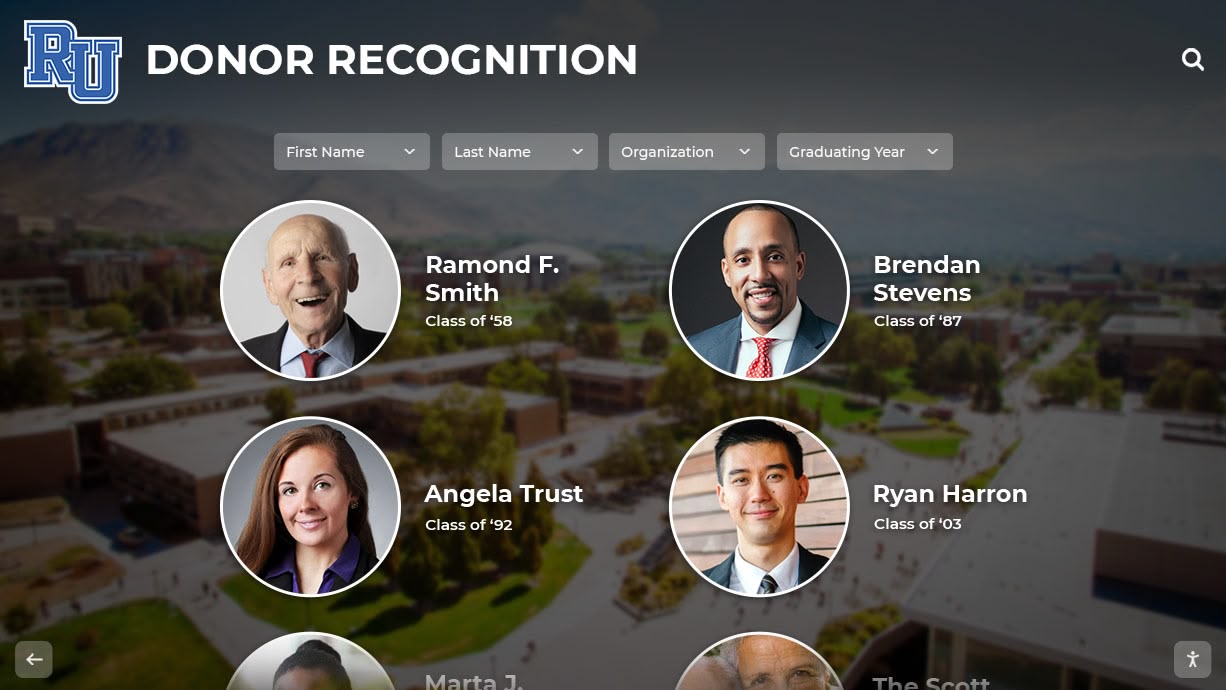
Digital Transformation: Interactive Recognition Displays
Digital renovation approaches replace or supplement physical plaques with interactive touchscreen displays managed through cloud-based content platforms:
Unlimited Recognition Capacity: Digital systems eliminate space constraints entirely, accommodating every achievement regardless of volume. Single displays showcase thousands of honorees through searchable databases that remain accessible indefinitely without physical expansion requirements.
Rich Multimedia Content: Beyond names and years, digital displays include high-resolution photographs, detailed achievement descriptions, video content showcasing accomplishments, searchable databases with multiple filter options, and connections between related achievements and individuals.
Instant Updates: Cloud-based management enables real-time recognition additions and updates from any internet-connected device. This immediacy ensures timely acknowledgment while maintaining motivation and celebrating achievements when they remain fresh and meaningful.
Enhanced Accessibility: Digital displays provide features improving accessibility including adjustable text sizing for visual impairments, screen reader compatibility for blind users, multiple language options for diverse communities, and mounting heights accommodating wheelchair users.
Engagement Analytics: Digital platforms track how visitors interact with displays including search patterns, most-viewed content, session duration, and engagement trends. These insights inform content strategy and continuous improvement impossible with physical displays.
Digital Solution Advantages:
- Provides unlimited capacity eliminating forced recognition exclusions
- Enables instant updates without physical labor or contractor coordination
- Delivers rich, engaging content impossible with physical plaques
- Creates accessible experiences for all community members
- Offers remote viewing through web-based access
- Reduces ongoing maintenance costs compared to physical displays
Digital Solution Considerations:
- Requires initial technology investment exceeding basic physical renovation
- Depends on electricity, network connectivity, and technical support
- Needs ongoing content management despite simplified interfaces
- May require change management helping communities embrace new formats
- Includes annual software licensing costs as operating expenses
Hybrid Approaches: Combining Traditional and Digital
Many institutions implement hybrid solutions preserving select physical recognition while incorporating digital displays for comprehensive achievement documentation:
Showcase Physical Recognition: Maintain traditional plaques for highest honors, special awards, or historically significant achievements. These showcase elements preserve ceremonial traditions and physical connection while digital systems handle comprehensive recognition.
Digital Comprehensive Database: Implement digital displays documenting all recognition including those represented physically and many more impossible to show through physical plaques alone. This approach honors tradition while solving capacity and information limitations.
Phased Transition: Begin with digital displays for recent achievements while gradually digitizing historical recognition. This phasing manages change while building stakeholder comfort with new systems before completely transitioning from physical formats.
Location-Based Differentiation: Place digital displays in high-traffic areas maximizing visibility and engagement while maintaining traditional displays in historically significant locations honoring institutional heritage and traditions.
Hybrid approaches often provide optimal solutions balancing tradition with innovation, immediate needs with long-term flexibility, and diverse stakeholder preferences. Solutions like Rocket Alumni Solutions accommodate various hybrid configurations enabling institutions to design recognition systems matching specific values and circumstances.
Implementing Digital Academic Recognition Displays
For institutions choosing digital transformation, successful implementation requires careful planning addressing technical, content, and change management dimensions.
Technology Selection and Installation
Digital recognition display projects begin with hardware and software decisions aligned with institutional needs and spaces:
Display Hardware Considerations: Commercial-grade touchscreen displays ranging from 43 to 75 inches provide optimal balance between visibility, interactivity, and space efficiency. Larger displays create impressive installations and accommodate group viewing, while multiple smaller displays distributed strategically increase total visibility across campuses.
Installation requirements include reliable electrical power, network connectivity (WiFi or Ethernet), and secure wall mounting or floor kiosk installation. Professional installation ensures proper mounting, clean cable management, and network configuration for reliable long-term operation.
Software Platform Selection: Purpose-built recognition platforms designed specifically for educational institutions provide intuitive interfaces, proven templates, comprehensive support, and features addressing common school needs. General digital signage solutions typically lack recognition-specific features and require extensive customization to match purpose-built platform capabilities.
Key software features include cloud-based content management accessible from any device, template systems ensuring visual consistency, searchable databases with multiple filter options, media libraries organizing photos and videos, automated backup ensuring content preservation, and usage analytics tracking engagement patterns.
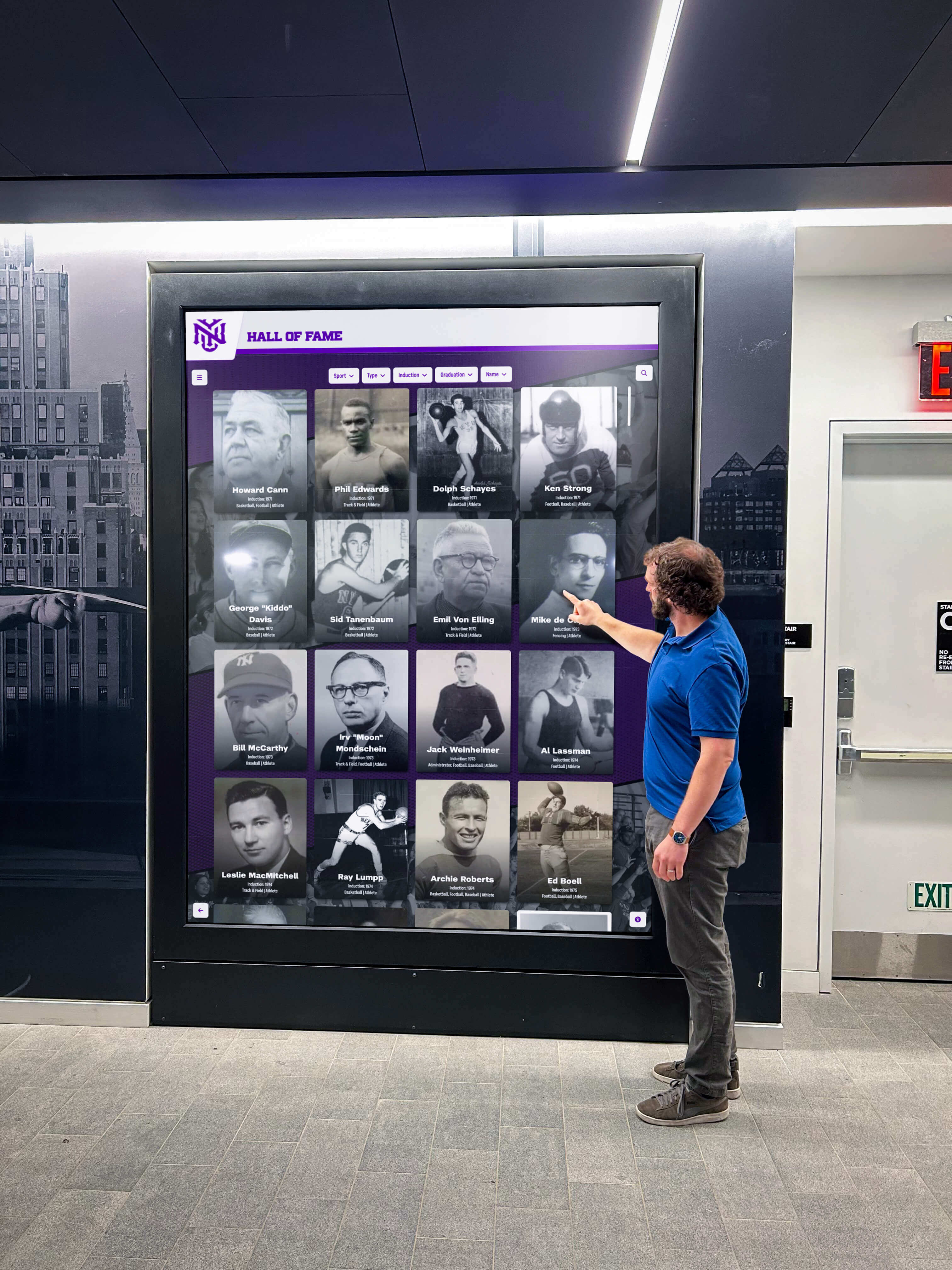
Content Development Strategy
Digital platforms enable rich content far beyond physical plaque capacity, but realizing this potential requires systematic content development:
Historical Recognition Digitization: Begin by documenting existing physical recognition systematically. Photograph plaques recording names, achievement types, and years. Research additional context about significant achievements. Organize historical information by academic year, achievement category, and individual honorees.
This digitization preserves institutional memory while making historical recognition searchable and accessible. Many schools discover forgotten achievements during inventory processes, restoring recognition to accomplishments previously lost to storage or deterioration.
Photography Standards: Establish consistent photography approaches ensuring professional appearance across thousands of individual profiles. Professional headshots communicate prestige and honor while informal photos feel casual and diminish recognition significance. Consistent lighting, backgrounds, and composition create cohesive visual experiences even as content spans decades.
Achievement Descriptions: Develop detailed descriptions providing context impossible on physical plaques. Explain what achievements required, their significance within institutional context, subsequent accomplishments by honorees, and connections to broader academic programs or values. Rich descriptions transform simple acknowledgment into meaningful recognition and inspiring storytelling.
Multimedia Integration: Incorporate video content including acceptance speeches, performances, or competition highlights when available. Audio interviews with honorees discussing their achievements and experiences add authentic personal dimensions. Document scans of certificates, awards, and original recognition materials preserve complete achievement records.
Ongoing Content Management: Establish clear responsibility for regular content updates including immediate recognition of new achievements, periodic profile enhancements as additional information becomes available, featured content rotation highlighting different achievements seasonally, and systematic quality control ensuring accuracy and consistency.
Solutions like digital donor recognition displays demonstrate how sophisticated content management enables comprehensive, engaging recognition that honors diverse achievements appropriately.
Change Management and Community Adoption
Successful digital recognition implementation requires managing change effectively, building stakeholder support, and encouraging community adoption:
Communication Strategy: Explain renovation rationale emphasizing benefits including unlimited recognition capacity, instant updates, rich multimedia content, improved accessibility, and enhanced engagement. Address common concerns about technology dependence, traditional value preservation, and system reliability transparently.
Stakeholder Engagement: Involve students, faculty, staff, and alumni in planning and implementation through planning committee participation, content contribution opportunities, pilot feedback sessions, and ceremonial launch events. This involvement builds ownership while gathering valuable input improving final implementations.
Training and Support: Provide thorough training for staff responsible for content management including system operation, content creation standards, photography and media guidelines, and troubleshooting common issues. Accessible documentation and responsive technical support enable confident, effective system management.
Celebration and Promotion: Launch digital displays with events celebrating both the technology and the achievements it showcases. Feature displays prominently in school communications, social media, and campus tours. Encourage community exploration through guided demonstrations, scavenger hunts, or contests highlighting display features.
Renovation Project Management and Budgeting
Effective academic wall of excellence renovation requires careful project planning, budget development, and implementation management ensuring successful outcomes.
Project Scope and Timeline Development
Assessment Phase (Weeks 1-2): Conduct thorough evaluation of existing conditions, stakeholder input gathering, and preliminary renovation approach consideration. Document current state comprehensively establishing baseline for planning.
Planning Phase (Weeks 3-6): Develop detailed renovation specifications, obtain multiple quotes from qualified vendors, finalize technology selections and design approaches, and establish comprehensive project budgets with contingencies.
Approval Phase (Weeks 7-8): Present renovation proposals to decision-makers including cost-benefit analysis, multiple approach comparisons, implementation timelines, and expected outcomes. Secure formal approvals and funding commitments before proceeding.
Implementation Phase (Weeks 9-16): Execute approved renovation including physical construction or installation, technology deployment and configuration, content development and upload, staff training, and quality assurance testing.
Launch Phase (Week 17-18): Conduct ceremonial unveiling, provide community orientation and training, gather initial feedback, and address any adjustment needs identified during early operation.
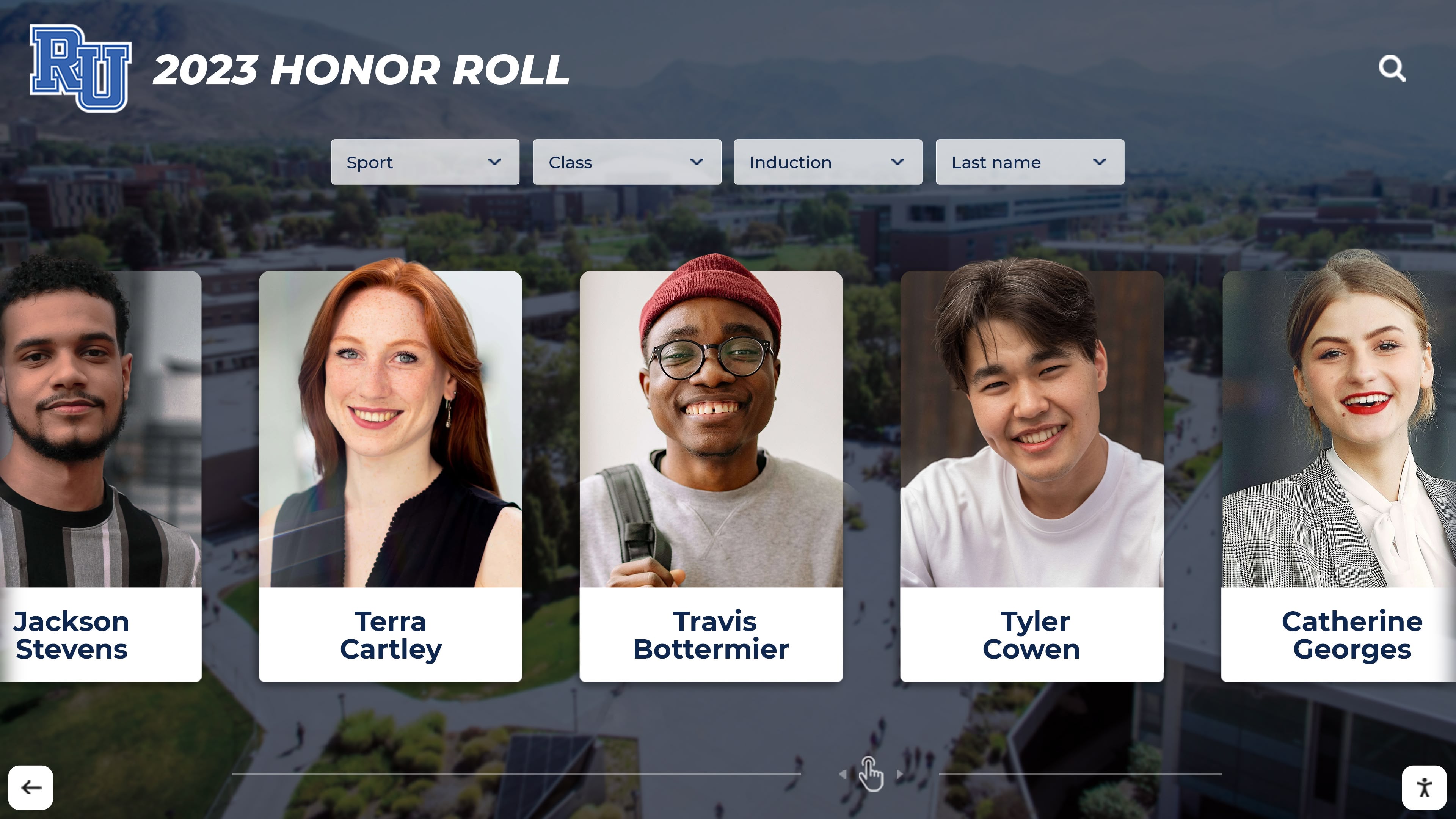
Budget Components and Cost Estimates
Physical Renovation Costs (Traditional Approach):
- Background replacement and refinishing: $3,000-$10,000 depending on size and materials
- New plaque fabrication: $50-$200 per plaque depending on material and engraving
- Professional installation labor: $2,000-$5,000 for complete wall renovation
- Lighting updates: $1,000-$3,000 for enhanced illumination
- Total traditional renovation: $15,000-$40,000 for comprehensive updates
Digital Display Implementation Costs:
- Commercial touchscreen displays (per unit): $3,000-$8,000 depending on size
- Professional installation: $2,000-$4,000 per display including mounting and connectivity
- Software platform licensing (annual): $2,000-$5,000 depending on features and scale
- Initial content development: $3,000-$10,000 for historical digitization and setup
- Total digital implementation: $20,000-$45,000 for comprehensive single-display system
Hybrid Implementation Costs:
Combination approaches typically cost between traditional and full digital implementations, ranging from $25,000-$50,000 depending on physical renovation scope and digital display scale.
Long-Term Operating Costs:
Traditional displays require ongoing plaque fabrication ($1,000-$3,000 annually) and periodic physical maintenance. Digital systems include annual software licensing but eliminate fabrication costs while requiring minimal maintenance primarily consisting of screen cleaning and occasional component replacement after 5-7 years of continuous operation.
Funding Strategies and Budget Sources
Capital Improvement Budgets: Facility renovation projects typically qualify for capital budget allocations designated for significant infrastructure improvements. Position academic recognition renovation as facility enhancement improving highly visible spaces serving core educational mission.
Advancement and Development Support: Recognition displays directly support advancement goals by celebrating donor generosity, inspiring continued giving, and demonstrating institutional commitment to honoring support. Development offices may allocate funds recognizing renovation as donor relations infrastructure investment.
Alumni Association Funding: Alumni groups frequently support projects enhancing campus recognition and tradition preservation. Renovation projects that improve alumni visibility and engagement often qualify for association funding support.
Memorial and Dedicated Gifts: Renovations provide naming opportunities for major donors seeking visible campus recognition. Individual displays, display networks, or complete renovation projects can carry donor recognition honoring their support while funding improvements.
Phased Implementation: Budget constraints need not prevent renovation. Implement projects in phases addressing most critical needs first while spreading costs across multiple budget cycles. Phased approaches allow earlier realization of benefits while managing financial impact.
Best Practices for Renovation Success
Institutions completing successful academic wall of excellence renovations share common approaches and practices that maximize outcomes and minimize challenges.
Prioritize Comprehensiveness Over Selectivity
Successful renovations recognize that every achievement matters and that forced selectivity due to space constraints undermines recognition purposes. Digital solutions like school achievement recognition systems enable comprehensive recognition impossible with physical-only approaches, celebrating every honor roll student, academic award recipient, and distinguished graduate without artificial limitation.
Emphasize Accessibility and Inclusion
Modern renovation projects prioritize universal accessibility ensuring all community members can engage with recognition content. This includes physical accessibility through appropriate mounting heights and locations, visual accessibility through adjustable text sizing and high contrast options, cognitive accessibility through clear organization and intuitive navigation, and remote accessibility through web-based viewing options.
Inclusive recognition demonstrates institutional commitment to serving entire communities while complying with accessibility standards and regulations.
Build for Future Flexibility
Renovation investments should anticipate future needs and changes. Digital systems provide inherent flexibility through software updates, content additions without physical modification, and integration capabilities connecting with evolving institutional systems. Even traditional renovations benefit from modular designs allowing easier expansion and flexible mounting systems accommodating future changes.
Integrate Recognition Across Programs
Comprehensive renovation projects connect academic recognition with broader institutional recognition including athletic achievements through digital trophy displays, alumni engagement through interactive alumni recognition, and advancement recognition through donor celebration. Integrated approaches create cohesive recognition ecosystems serving multiple institutional priorities through coordinated platforms.
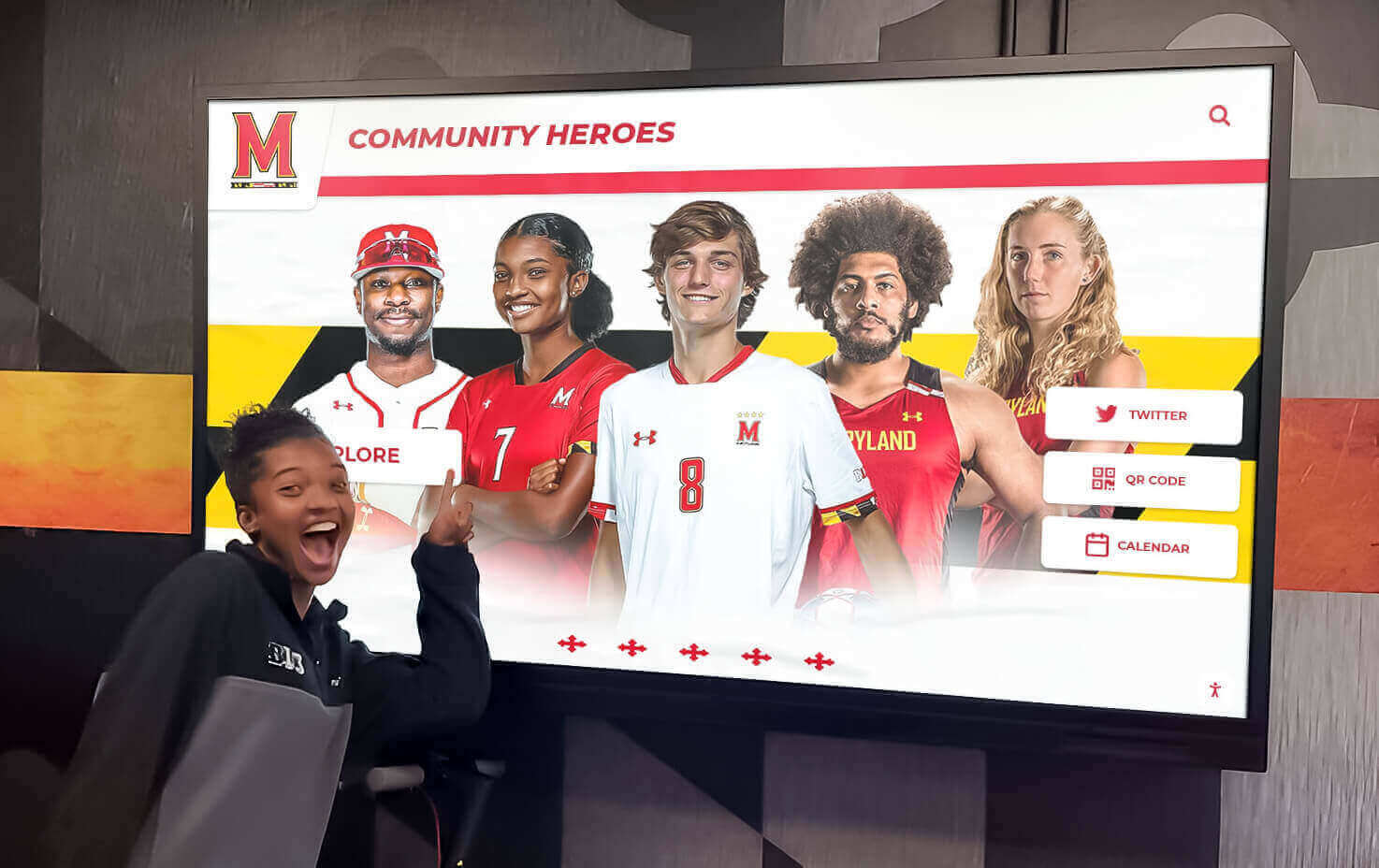
Invest in Quality Content
Technology platforms enable rich recognition, but realizing this potential requires quality content investment. Professional photography, detailed achievement descriptions, multimedia integration, and thoughtful organization transform displays from simple databases into engaging recognition experiences that inspire current students while honoring past achievement appropriately.
Plan for Sustained Operation
Successful renovations include sustainable plans for ongoing operation including clear content management responsibility, regular update schedules, maintenance protocols, and periodic assessment. Recognition displays require attention maintaining relevance and functionality long after initial implementation.
Conclusion: Transforming Recognition Through Strategic Renovation
Academic walls of excellence represent visible symbols of institutional values and commitments to recognizing scholarly achievement. When these displays function effectively, they motivate current students, honor past accomplishments, preserve institutional memory, and communicate educational priorities clearly to entire communities.
Traditional physical displays served these purposes well for decades, but space limitations, maintenance challenges, and engagement limitations increasingly prevent them from delivering recognition value contemporary communities expect and deserve. Renovation provides opportunities to address these limitations while embracing capabilities that transform recognition fundamentally.
Modern renovation approaches—whether traditional refreshment, complete digital transformation, or thoughtful hybrid combinations—enable institutions to honor every achievement comprehensively, update recognition instantly maintaining motivational impact, provide rich content telling fuller achievement stories, create accessible experiences serving all community members, and build flexible systems accommodating continued institutional evolution.
The decision to renovate academic walls of excellence represents strategic investment in institutional culture, student motivation, and community pride. When planned thoughtfully, executed professionally, and managed sustainably, renovated recognition systems deliver lasting value that enhances educational missions while honoring the scholarly excellence that defines institutional identity and aspirations.
Whether you’re beginning initial renovation conversations, evaluating specific approaches, or ready to implement comprehensive transformation, solutions like Rocket Alumni Solutions provide proven platforms designed specifically for educational recognition, offering intuitive management, engaging displays, comprehensive support, and demonstrated success serving hundreds of schools and universities nationwide.
Your students achieve remarkable academic accomplishments every year. Renovated recognition systems ensure these achievements receive celebration that inspires continued excellence, honors diverse accomplishments appropriately, preserves institutional memory permanently, and builds school communities where every student feels valued and motivated to pursue their highest academic potential.
